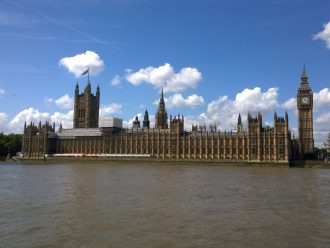The Pension Protection Fund 7800 Index has revealed an aggregate surplus of the 5,131 schemes in the Index – which is good news for pension schemes on a number of fronts.
It is estimated to have increased over the month to £446.1bn at the end of July 2023, from a surplus of £437bn at the end of June 2023, according to its latest update.
The funding ratio increased from 145.8% at the end of June 2023 to 146.4%, with the number of schemes in surplus rising to 4,673 from 4,652.
Sion Cole, head of UK fiduciary business at Blackrock, said funding level gains can be attributed to an improved level of investor sentiment across financial markets. “This was fuelled by the news that inflation softened over July, leading some investors to believe that developed economies can achieve a soft landing through less aggressive central bank rate hikes,” added Cole.
Further, he noted: “Pension scheme assets were boosted by a rebound in growth assets, such as equities, which continued to rally over the month.”
Importantly, Cole said markets are now pricing that the Bank of England will trade off growth to continue raising rates to above 6%. “Schemes face a new macro regime that, while challenging, provides opportunities to continue shoring up their funding positions,” he said.
That said, he added: “Most schemes are well positioned to hold tight in an environment of stickier inflation and elevated rates. Amid these conditions, we expect well managed, diversified schemes to begin outperforming schemes that have been slower to adapt.”
On a longer-term horizon, Cole said he sees strategic opportunities in private markets. “Private credit is particularly benefiting from higher yields, while having greater downside protection than other risk assets,” he said. “In the current environment, this is crucial to maintain a balanced portfolio.”
New phase
Jaime Norman, senior actuarial director at consultancy Broadstone, agreed with the premise that we are now entering a new phase of the economic cycle “which presents opportunities and challenges for pension schemes and their trustees”.
Expanding on this, he added: “Persistent inflation is starting to come down and economists forecast that we are nearing the end of the Bank of England’s rate hiking. Growth assets delivered positive performance through the month as the market becomes increasingly optimistic that a recession is looking less likely as inflation starts to come under control.”
Norman therefore noted that the second half of the year is therefore a crucial time for pension scheme trustees to take stock: “particularly given many will have significant improvements in their funding position over the past 18 months”.
End-game objectives
Their job now, he said: “Will be capitalising on the market environment either by rapidly pursuing their end-game objectives or assessing the suitability of their investment strategy to the current economic situation.
“In such a congested market, trustees will also need to ensure their data and administration is in good order to make their scheme as attractive as possible to insurers.”
Offering another take on the interpretation of the PPF’s numbers, Shalin Bhagwan newly appointed PPF chief actuary, added: “Despite a softening of inflation during July, market interest rates were broadly unchanged, which has resulted in little movement in estimated scheme liabilities this month.”
Meanwhile, optimism that developed economies would avoid recession grew and growth-sensitive assets like equities saw strong returns, leading to an improvement in estimated scheme assets.
“As a result of these developments, the momentum driving improved funding levels over the past few months has been maintained, with the funding ratio increasing by 0.6 percentage points to 146.4%,” added Bhagwan.





Comments